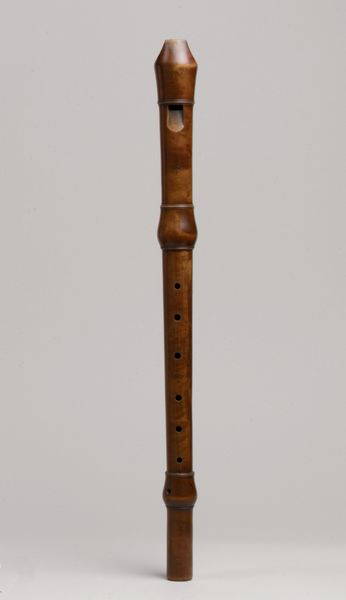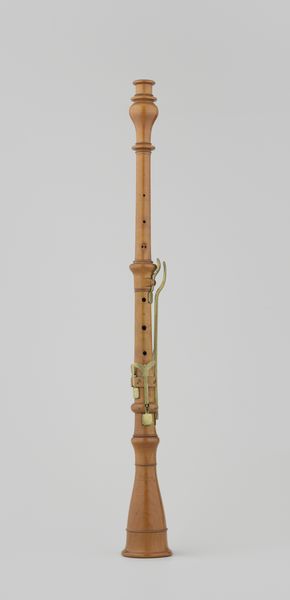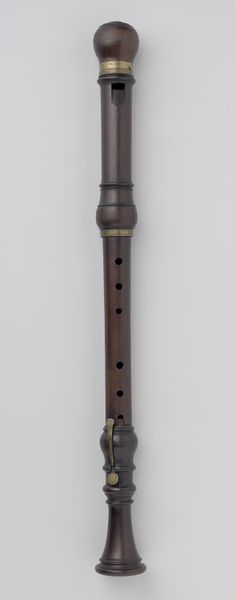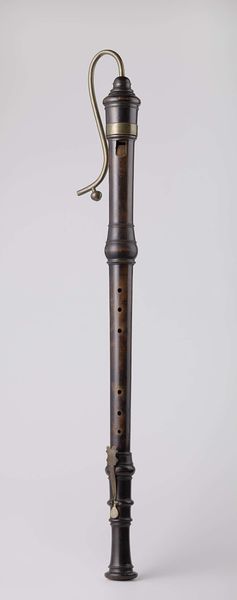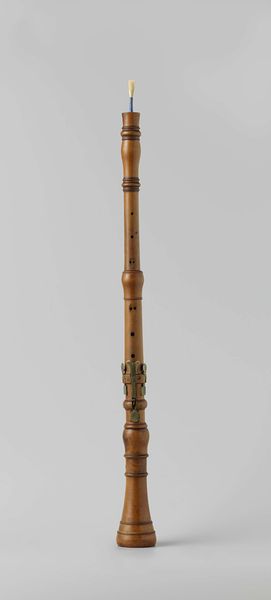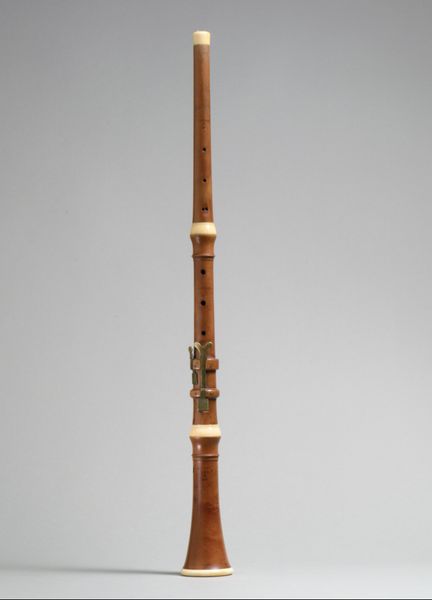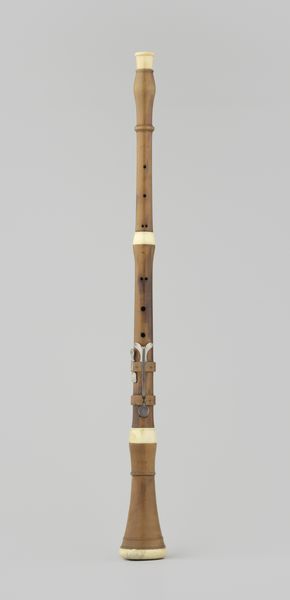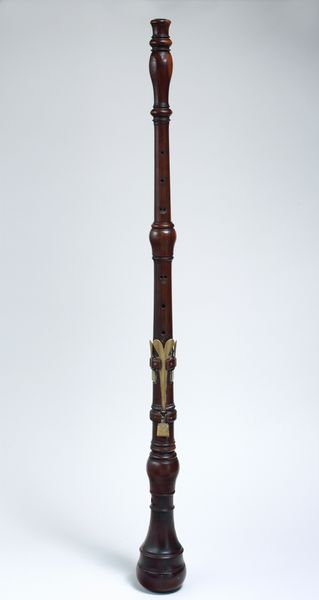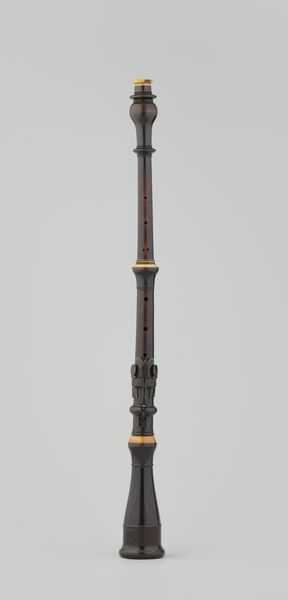
brass, wood
#
brass
#
baroque
#
wood
Dimensions: length 619.5 mm, diameter 80 mm
Copyright: Rijks Museum: Open Domain
This is a ‘Duytse Schalmey’ made by Richard Haka, a Dutch instrument maker, sometime between 1646 and 1705. The shawm presents a study in wood and metal, its form both functional and decorative. Notice how the cylindrical body transitions into a flared bell, creating a visual rhythm that is punctuated by metal bands. These bands aren’t merely decorative; they define the structure and the instrument's acoustic properties. The careful placement of finger holes along the shaft suggests a deliberate calibration of space and sound. Consider how the material contributes to the overall aesthetic. The wood, warm in tone, is juxtaposed against the cool gleam of metal, a contrast that highlights both texture and form. The shawm is not just an instrument of sound; it is a sculpted object, its shape dictating the very air it moves. As such, it embodies the philosophical and aesthetic values of its time, where utility and beauty were inextricably linked.
Comments
rijksmuseum about 2 years ago
⋮
The origins of double reed instruments lie in the mists of time. Widely used between the 15th and 17th centuries, the shawm was the predecessor of the oboe. Mostly played in dance and ceremonial music, shawms were appreciated for their loud and warm tone.
Join the conversation
Join millions of artists and users on Artera today and experience the ultimate creative platform.

